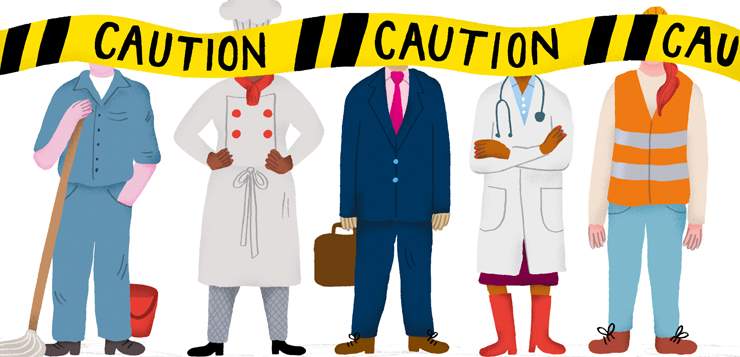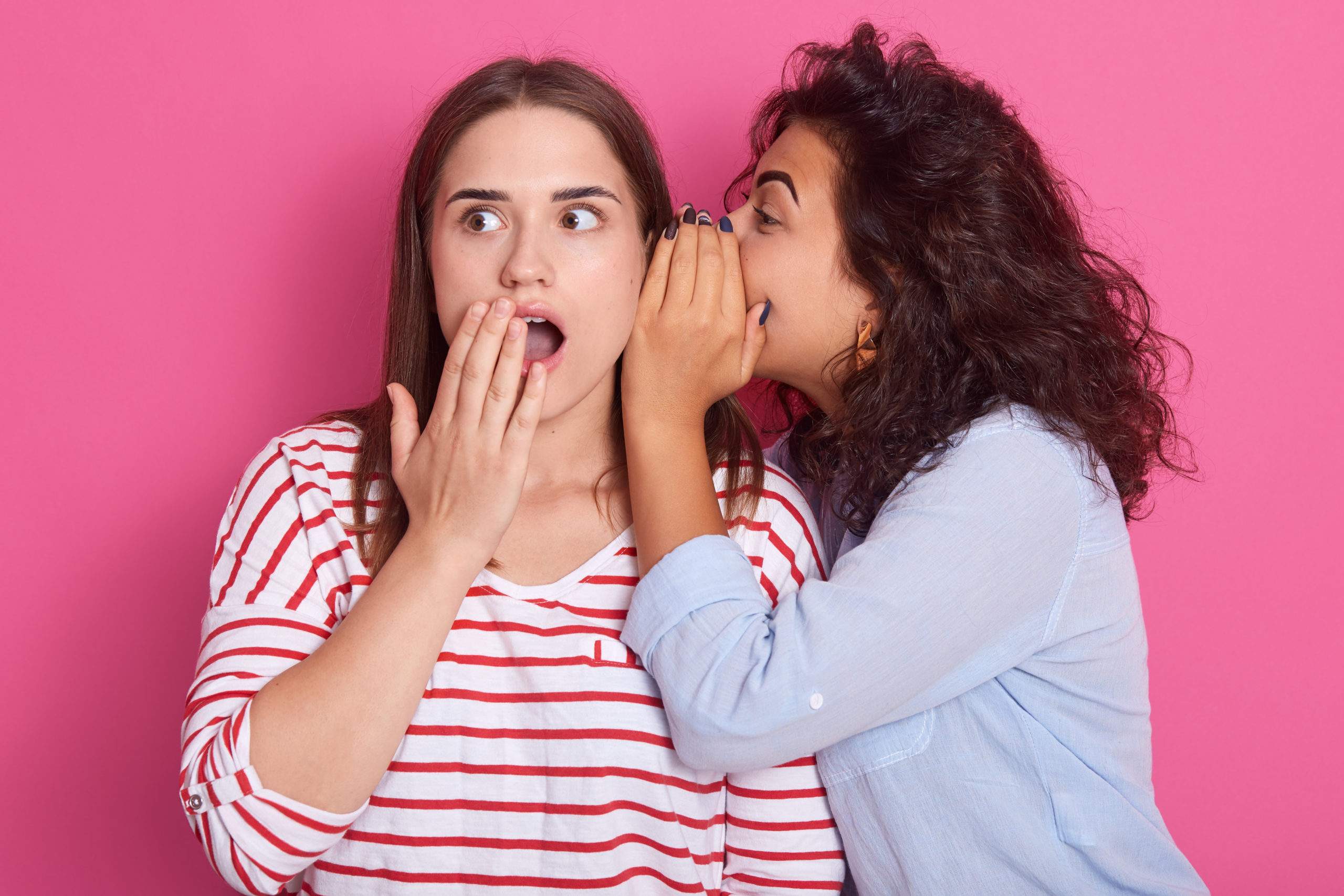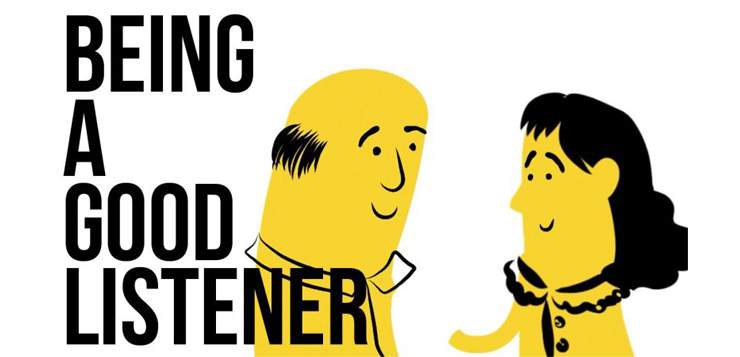Thoughts of what divides us fill the news these days, and it can’t help but trouble the mind—and it ought to, for sure. We need to continually explore the sources of hate and violence, both individually and as a society. Mindful is committed to doing just that, and to exploring how mindfulness practice may help us in working with the inevitable biases that are part of our makeup as human beings. This piece from 2016, by Mindful’s science columnist, Sharon Begley, reports on research that may be upsetting, because it suggests just how automatic our biases can be, once they have been entrained in us by our cultural environment.
Before publishing this piece, I reached out for comment to a variety of people of color who do mindfulness work. To a person, they thought the piece presented information that it was valuable for us all to take into account. They also suggested that we need to continually present pieces that also emphasize the means to counteract bias and its very harmful effects. At the end of the piece, I include a synopsis of some of their comments. I encourage you to please add your own voice to Mindful’s ongoing exploration of bias—and how we can work with it creatively—by sharing a comment with us and all our readers.
Barry Boyce
Founding Editor
In the 1933 Marx Brothers classic Duck Soup, Chico Marx asks, “Who are you going to believe, me or your own eyes?” The late great comedian Richard Pryor changed it to “lyin’ eyes” in one of his classic bits, using humor to underline a very serious point: At the very level of perception, our eyes are already lying to us, because of how our brains have been conditioned to see.
A growing body of research is showing that what we see when we see a face is so strongly shaped by stereotypes, beliefs, and attitudes that we literally see features, expressions, and emotions that aren’t there and can actually—at least at first—misperceive sex, race, and expressions.
We instantly classify a face by sex, race, age, social status, and emotion, the strongest categories available to the brain. (Evolution sculpted the brain to be attuned to signals that might alert us to possible threats.) Next, the brain immediately and unconsciously activates everything it knows (or believes) about people belonging to the categories—that’s how stereotypes are born. In less than a second (hence the name “split-second social perception,” as this process is called), those stereotypes act back on our visual system.
The more racially ambiguous a face, the more often people initially chose the race that stereotypes associate with high- or low-status attire.
Result: “Your perception of a face is a combination of what’s before your eyes and the baggage you bring to the table,” said psychologist Jonathan Freeman of New York University, a pioneer in the field of social perception, who summarized his body of work in a May 2016 review in Trends in Cognitive Sciences. As a result of “the baggage we bring to the table,” what we literally see is not a straightforward read-out of facial features, but rather a complex construct with input from the brain’s belief system. If we are raised in “a cultural context where the implicit associations that create these biases are absorbed,” in Freeman’s words, the biases will show up in our perceptions.
DEFINITION
Top-Down Processing: When our brain and nervous system encounters an external stimulus, how it detects and defines that stimulus is based on mental categories we use to map the world. Those maps can be mildly to very distorted.
And this super-rapid sizing-up can have troubling real-world consequences. African-Americans engaging in the very same behavior as whites are seen as more threatening or aggressive, according to numerous studies that go back to the 1970s. Subjects asked to quickly identify a blurry object in a photo were more likely to see guns, knives, and other weapons in the hands of black people and things like cell phones and wallets in the hands of whites. Many believe that erroneous split-second perceptions have been a major factor in police officers’ miscalculation of the threat posed by suspects (and even innocent bystanders). While this phenomenon with respect to policing has not been extensively studied yet, Freeman is clear that, “perceptual biases can play a role in driving behavior.”
Freeman uses a technique called mouse-tracking (the computer kind, not the rodent), in which people look at a face and as quickly as possible use the mouse to click on some attribute of it: black or white or Asian, for instance, male or female, hostile or friendly. The key thing about a mouse is that it is highly sensitive to partial, tentative shifts in perception, and its movement can be precisely tracked. Freeman therefore knows if people start to move toward one attribute before changing their minds. In other words, he’s not interested only in the final answer but whether there was uncertainty in getting to it: If someone steers the mouse toward “male” before clicking on “female” when asked the gender of a face, that shows that the brain initially thought of male.
The participants in Freeman’s studies have tended to be university undergraduates and now are commonly people reached online through survey companies. In both cases, participants tend to be fairly evenly split between male and female and are predominantly white, reflecting the country’s racial make-up. Although there were not enough people in minority groups to break them out and analyze them separately, in general, he maintains that the biases shown by split-second perception “tend to exist across all individuals so long as they were raised in a cultural context” where these implicit biases were absorbed.
In one experiment (published in 2011 in PLoS One), Freeman showed volunteers men wearing either a janitor’s uniform or a business suit. “What is his race?” Freeman asked. When a white man was in a janitor’s uniform, the volunteers’ hands initially moved toward “black” before (usually) correcting and choosing white. When a black man was in a business suit, the mouse headed for “white” before choosing black. The more racially ambiguous a face, the more often people initially chose the race that stereotypes associate with high- or low-status attire. Freeman believes this demonstrates just how powerfully stereotypes can steer perception. “Stereotypes or expectations can literally change what we see when we look at a face,” Freeman said. “For a few hundred milliseconds, we literally see someone wearing low-status attire stereotypically associated with blacks as black before it is ultimately categorized as white.”
Society’s stereotypes insinuate themselves into our gray matter in a deep-seated way, literally affecting what we see.
Using the same mouse-tracking technique, Freeman and his colleagues have found that when asked what emotion a black face is expressing, people initially move the mouse toward “angry” before ultimately selecting “joy” (the actual expression on the face, as virtually all the volunteers eventually see). This misperception exacerbates our already-poor ability to read facial expressions, as Paul Ekman’s pioneering experiments on “microexpressions” have shown.
Our eyes lie so badly that people in Freeman’s experiments take a split-second longer to identify a black female face as female than to identify a white female face as female; they initially are drawn to “male” even when the woman’s features are as feminine as the white woman’s. The reason, he suspects, is that stereotypes exist associating “black” with “aggressive,” and “aggressive” with “male,” so subjects “see” the face as male before correcting themselves. The same phenomenon occurs with male Asian faces: There is a stereotype that associates “Asian” with “unthreatening/happy,” and “unthreatening/happy” with female, so male Asian faces are seen, for a fraction of a second, as female. In response to a suggestion that people may be perceiving Asian facial bone structure as more “female,” Freeman asserts that his latest work combining mouse-tracking with neuroimaging has controlled for these possible perceived physical resemblances. He believes stereotypical associations on perceptions are stronger than physical resemblances.
Split-second perceptions can influence what we see—in what cognitive scientists refer to as “top-down processing,” whereby categories and expectations drive perception—regardless of whether we endorse a stereotype. Society’s stereotypes insinuate themselves into our gray matter in a deep-seated way. “These topdown cognitive processes reach into our basic ability to perceive,” Freeman said. “Things like stereotypes and attitudes, which were long thought to be downstream processes,”—meaning they would come into play only after we correctly perceived something like a face—“in terms of perception, in fact affect the actual, initial perception—literally, what we see.”
This work suggests that as we seek to counteract bias, personally and societally, we need to pay attention both to how our brains are trained and conditioned by the cultural context we exist in and how they can lie to us on the spot.
This article originally appeared in the October 2016 issue of Mindful magazine.
An edited synopsis of comments received by Mindful from early reviewers of this piece who work with mindfulness and bias:
- We need more research and analysis not just on what biases people exhibit on the spot but also on how are brains get conditioned in the first place. Jerry Kang (UCLA law professor) wrote a piece years ago called Trojan Horses of Race, in which he suggests that since so much of this training and conditioning comes through biased but publicly subsidized and regulated media. We need to counteract these sources of cultural conditioning, by first paying attention to the news we’re consuming, which is where mindfulness comes in. But we should also consider calling for public service messages in news media that intentionally counteract those messages.
- This is important research and it needs to be heard, and discussed both publicly and privately. We need to get real with each other. But if this conversation isn’t handled well, the research can actually reinforce existing stereotypes. Achievement scores for students of color is one example. While many use research to show the inequities, many people read the research as an indicator of “these children do not value education,” do not “study hard enough,” etc. Let’s be careful not to draw the wrong conclusions, which will lead us to the wrong prescriptions.
- Meditation alone will not suffice to help us work with our biases and counteract them. If each of us is mindful on our own, does that mean that we will collectively be more mindful? Not necessarily. We need to train together and take into account how bias forms and sticks in a culture. We are all part of institutional structures that promote bias. Folks need to use their positions, circles of influence, and so forth to address systemic bias.
- As an Asian, I would like to see the breakdown of how different cultures/races have different implicit biases. Also, if there was a breakdown of biases according to different age groups to see if through each generation there is a shift one way or another. This may require follow-up research.
- This research can be tough to swallow, but we need to let it open our eyes. Given what we see in the news these days, it’s refreshing to shed light on some of the reasons people might be provoked to act in such irrational and ultimately highly destructive ways. We can all benefit from more self-awareness on how our own stereotypes may affect a situation. We can couple this understanding with a desire to really train ourselves to be more mindful. That’s where the hope is.
Other pieces on mindful.org dealing with bias and its effects:
Fear Less, Love More: Evolution has primed us to seek solid ground, certainty. That’s why we’re so quick to label others. Is mindfulness the way to uncover and counteract unconscious bias?
Healing Racial Fault Lines: A program in the Deep South shows us the power of addressing conflicts head-on.
To Pause and Protect: In a groundbreaking program, Oregon police officers are learning mindfulness techniques to deal with stress, be more focused on the job, and connect more meaningfully with the people they serve.








